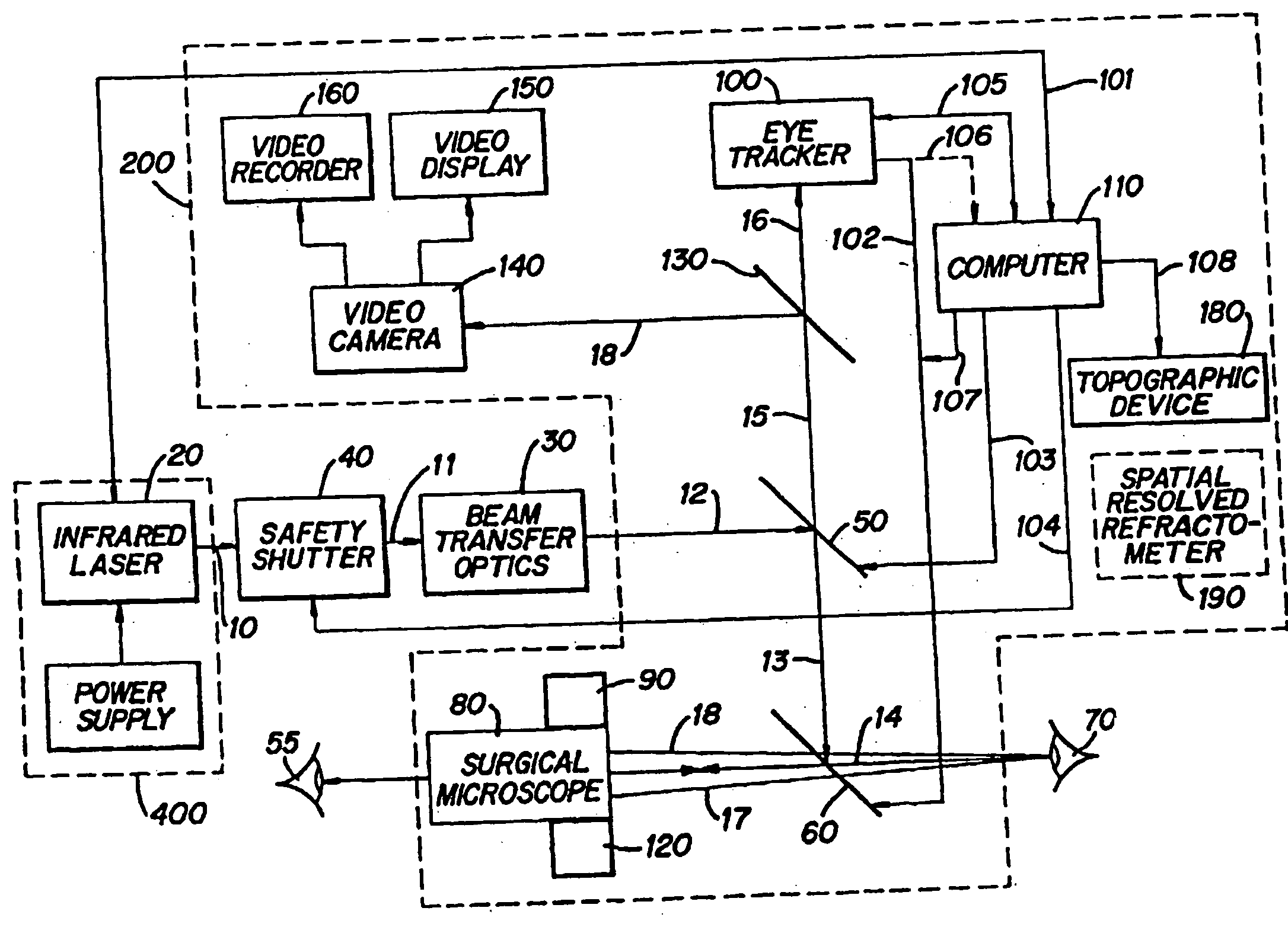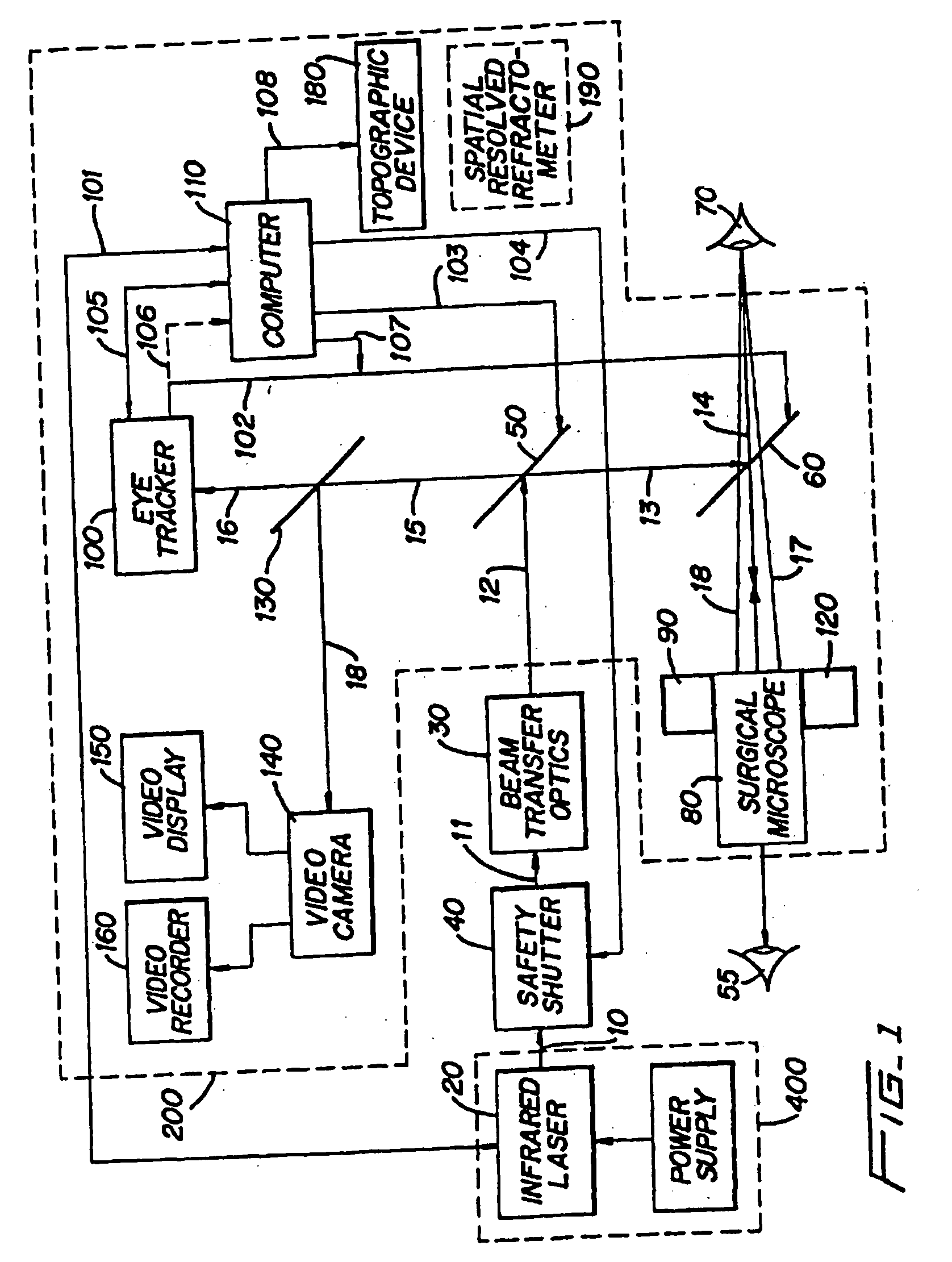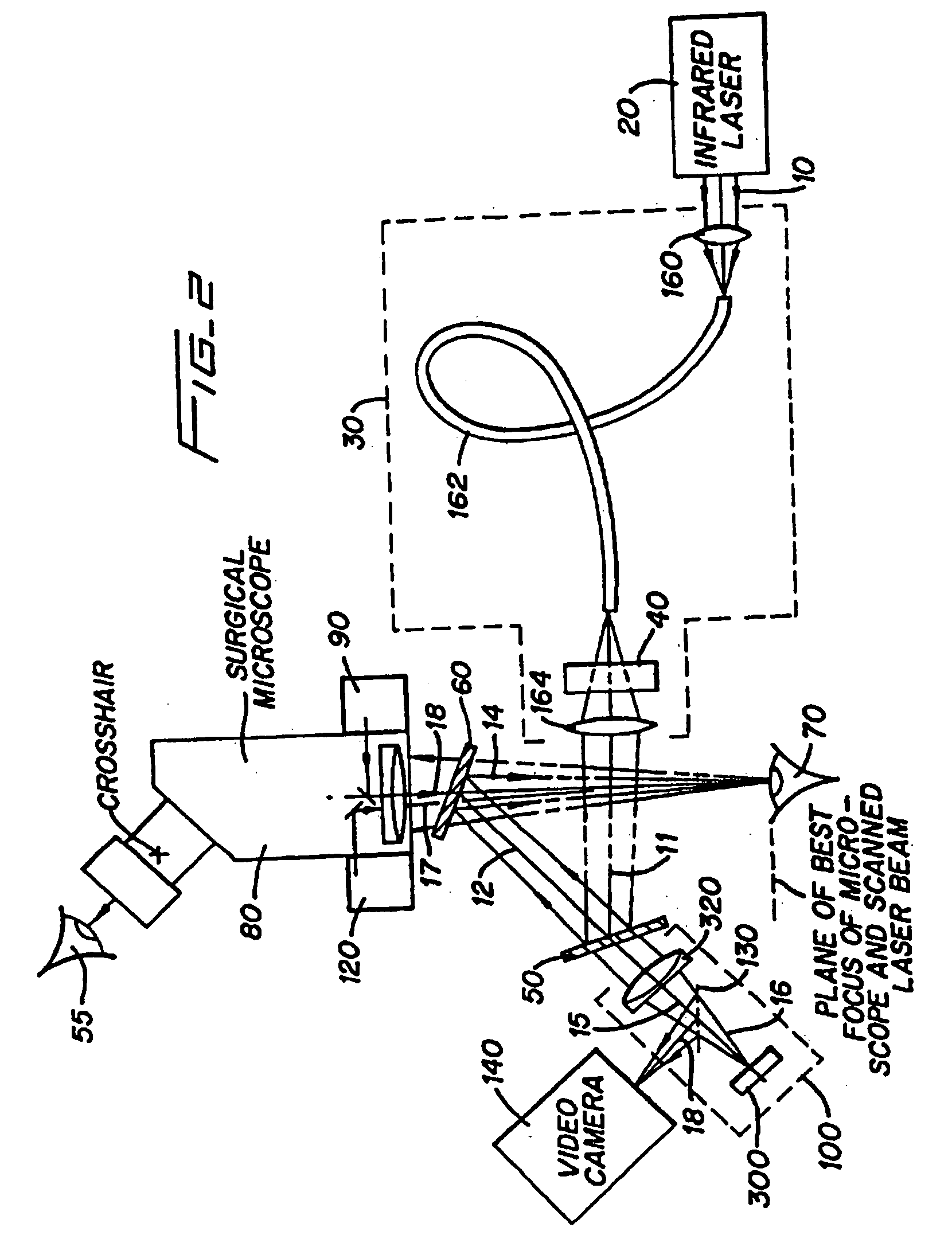Such lasers, however, tend to be prohibitively large and expensive systems.
Of course, such a multiplicity of optical elements contributes to overall
transmission loss, while adding substantial optical complexity, cost, and maintenance requirements to the
system.
While laser surgical techniques based on the
excimer laser have proved beneficial for many applications, such techniques suffer from a number of limitations, which, if overcome, could significantly advance the utility of optical
laser surgery.
For example, techniques based on
excimer lasers utilize toxic gases as the laser medium, suffer from persistent reliability problems, require lossy
optics in the delivery systems, and suffer from the possibility that the UV radiation is potentially mutagenic through secondary
fluorescence, which may cause undesirable long term side effects to the unexposed tissues of the eye.
Current limitations of nonlinear elements used as frequency-shifting devices, however, place a
lower limit of approximately 205 nm on the available wavelengths of such lasers, which may be too close to the mutagenic range, which exhibits a peak at 250 nm.
In addition, multiply-shifted laser devices also face certain difficulties in providing the requisite energy outputs and are fairly complex and cumbersome, leading again to potential laser reliability problems, as well as added cost and maintenance.
This
high absorption results in a small region of
impact with potentially less than two micron penetration depths.
While providing a number of advances over prior techniques, the Er:YAG laser techniques described by Seiler and Wollensak and Cozean et al. both suffer from a number of potential drawbacks, common to
wide area ablation techniques, including the need for a smooth and uniform beam profile, a large
pulse energy, and / or a
complex filter control system.
This has been shown, however, to be an incorrect assumption for the
excimer ablation process, and may also be an incorrect assumption for the Er:YAG ablation process.
In addition to the limitations previously discussed, all such prior techniques for delivering and controlling a mid-
infrared laser beam are subject to one shortcoming in particular, namely, the potential for
thermal damage to unablated regions of the eye, due to
excessive energy density required by these systems and the large shock
waves generated by the
high energy pulses required to ablate wide areas.
In addition, due to the need for high
pulse energy and high beam quality, such prior systems typically exhibit optical configurations that are generally not conducive to ease of manufacturing and are difficult to maintain and service.
Furthermore, the potential
phototoxicity of high-power UV radiation is still an undetermined risk in excimer-laser-based PRK.
In particular, there is concern that the UV radiation poses certain mutagenic and cataractogenic risks due to secondary
fluorescence effects.
However, while ophthalmic surgical techniques based on free running or long-pulse
erbium lasers have shown some promise, they also suffer from a number of drawbacks principally relating to the fact that the IR radiation causes collateral
thermal damage to tissue adjacent to the ablated region, where the size of the
damage zone may exceed several microns, resulting in potentially undesirable long term effects.
While highly attractive because of its simplicity, even with the aid of future
diode pumping, it may be difficult to extend the
erbium laser operation to high repetition frequencies (in excess of 30 Hz) due to strong thermal
birefringence effects.
However, no such device has been available to date that can meet all the requirements of the ophthalmic
surgical procedures contemplated.
Realization of an optical parametric device with output at the desired 2.9 to 3.0 microns
wavelength range was considered difficult because the two readily available candidate crystals of LiNbO3 and KTP exhibit absorption in that
wavelength range.
Use of LiNbO3 in particular is not considered feasible because of absorption at or near 3.0 microns due to the OH-band present in the crystal using current growth methods.
Other drawbacks of the OPO design include a perceived requirement for powerful and high-beam-quality pump sources that can overcome the high threshold for the onset of a parametric process.
Since the effectiveness of increasing the pump
power density by focusing the pump beam is limited by the walk-off angle of the nonlinear crystal, the threshold condition cannot be overcome simply by using small pump beam diameters in most crystals.
A way to circumvent this problem is to use a crystal that can be non-critically phase-matched (such as KTP), resulting in higher acceptance angles, but this configuration is not possible for a 1 microns pump beam wavelength and with the output wavelength desired for a successful PRK procedure.
Lasers emitting at this
wavelength range are, however, more complex and expensive than standard
neodymium doped laser at or near 1 micron.
For a medical laser instrument, it is generally not desirable to impose overly stringent requirements on the pump laser, as that would result in more complex and costly systems.
Also, in the case of a
gaussian spatial profile beam, uneven distribution of the peak
power density across the crystal can result in only part of the beam contributing significantly to the parametric generation thereby compromising the efficiency of conversion.
Furthermore, absorption in KTP, which is known to be substantial at 3.0 microns, was another issue of concern especially for operation at elevated average power levels and / or high repetition rates.
 Login to View More
Login to View More  Login to View More
Login to View More 


